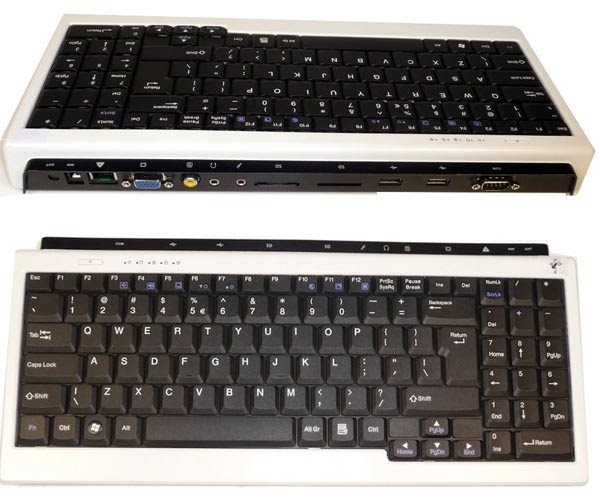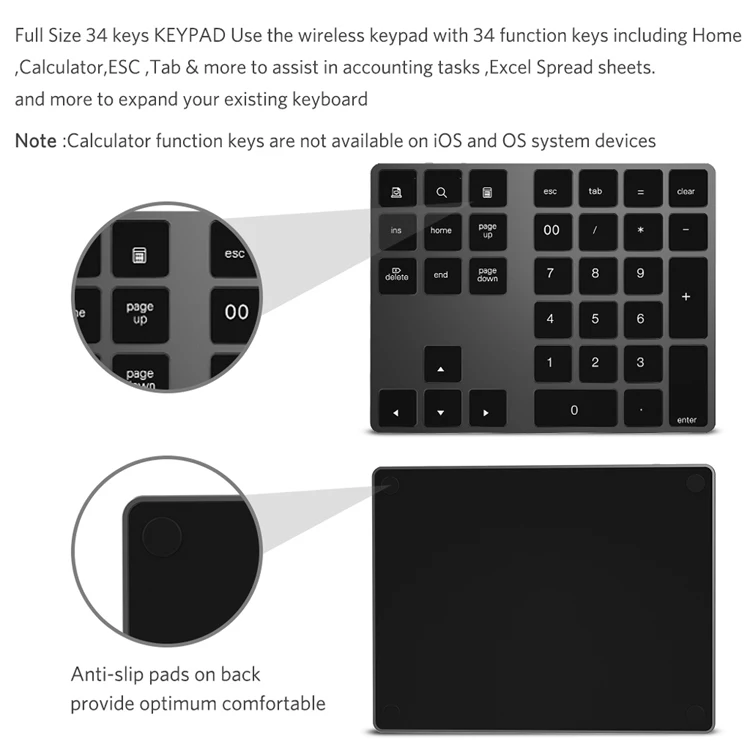

- #Apple number pad for laptop drivers
- #Apple number pad for laptop driver
- #Apple number pad for laptop portable
- #Apple number pad for laptop software
- #Apple number pad for laptop series
Touchpads also exist for desktop computers as an external peripheral, albeit rarely seen. The touchpad is close to the keyboard, and only very short finger movements are required to move the cursor across the display screen while advantageous, this also makes it possible for a user's palm or wrist to move the mouse cursor accidentally while typing.
#Apple number pad for laptop portable
Touchpads are primarily used in self-contained portable laptop computers and do not require a flat surface near the machine. The touchpad is the rectangle near the bottom of the gray keyboard. Epson was an early adopter of this product. Later, Synaptics introduced their touchpad into the marketplace, branded the TouchPad. Another early adopter of the GlidePoint pointing device was Sharp.
#Apple number pad for laptop series
Apple introduced touchpads to the modern laptop in the PowerBook series in 1994, using Cirque's GlidePoint technology later PowerBooks and MacBooks would use Apple-developed trackpads. Cirque introduced the first widely available touchpad, branded as GlidePoint, in 1994. Laptops with touchpads were then launched by Olivetti and Triumph-Adler in 1992. In 1989 a touchpad was developed for Psion's MC 200/400/600/WORD Series. Introduced a year later, in 1983, the first battery powered clamshell laptop, the Gavilan SC included a touchpad, which was mounted above its keyboard, rather than below, which became the norm. History īy 1982, Apollo desktop computers were equipped with a touchpad on the right side of the keyboard.
#Apple number pad for laptop driver
All of these functions are implemented in the touchpad device driver software, and can be disabled.
#Apple number pad for laptop drivers
Also, some touchpad drivers support tap zones, regions where a tap will execute a function, for example, pausing a media player or launching an application.

Many touchpads use two-finger dragging for scrolling.

For example, on certain touchpads, moving the finger along an edge of the touch pad will act as a scroll wheel, controlling the scrollbar and scrolling the window that has the focus, vertically or horizontally. Some touchpads have 'hotspots', locations on the touchpad used for functionality beyond a mouse. Physically the whole clickpad formed a button, logically the driver interprets a click as a left or right button click depending on the placement of fingers. Touchpads are called clickpads if it does not have physical buttons, but instead relies on 'software buttons'. Touchpad drivers can also allow the use of multiple fingers to emulate the other mouse buttons (commonly two-finger tapping for the center button). To drag, instead of performing the 'click-and-a-half' technique, the user presses down while on the object, drags without releasing pressure, and lets go when done. To select, one presses down on the touchpad instead of a physical button. Tactile touchpads allow for clicking and dragging by incorporating button functionality into the surface of the touchpad itself.
#Apple number pad for laptop software
Some touchpads and associated device driver software may interpret tapping the pad as a mouse click, and a tap followed by a continuous pointing motion (a 'click-and-a-half') can indicate dragging. Hardware buttons equivalent to a standard mouse's left and right buttons are positioned adjacent to the touchpad. For common use as a pointer device, the dragging motion of a finger is translated into a finer, relative motion of the cursor on the output to the display on the operating system, analogous to the handling of a mouse that is lifted and put back on a surface. While touchpads, like touchscreens, are able to sense absolute position, resolution is limited by their size. Fingers insulated by a glove may also be problematic. Capacitance-based touchpads will not sense the tip of a pencil or other similar ungrounded or non-conducting implements. The most common technology used in the 2010s senses the change of capacitance where a finger touches the pad. Touchpads operate in one of several ways, including capacitive sensing and resistive touchscreen. Wireless touchpads are also available as detached accessories. Because they vary in size, they can also be found on personal digital assistants (PDAs) and some portable media players. Touchpads are a common feature of laptop computers as opposed to using a mouse on a desktop, and are also used as a substitute for a mouse where desk space is scarce. Closeup of a touchpad on a MacBook 2015 laptop.Ī touchpad or trackpad is a pointing device featuring a tactile sensor, a specialized surface that can translate the motion and position of a user's fingers to a relative position on the operating system that is made output to the screen.


 0 kommentar(er)
0 kommentar(er)
